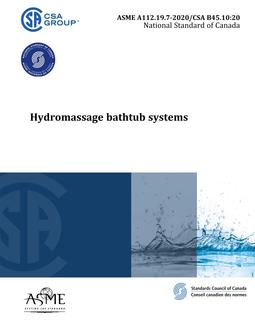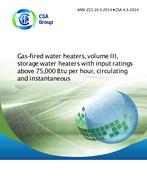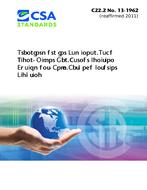Preface
This is the sixth edition of CSA B339, Cylinders, spheres, and tubes for the transportation of dangerous goods. It supersedes the previous editions published in 2008, 2002, 1996, 1988, and 1983. This Standard is one of a series of Standards intended for adoption by reference by the Transportation of Dangerous Goods Regulations. Because the Regulations might adopt this Standard with certain exceptions or additional requirements, they should be consulted to determine where they differ from the requirements of this Standard. Until the Regulations are amended to adopt this edition of the Standard, an earlier edition may be the one legally in effect in Canada. The CSA Technical Committee on Cylinders, Spheres, and Tubes for the Transportation of Dangerous Goods, which is responsible for this Standard, has maintained close links with Transport Canada to ensure compatibility of the new edition of this Standard with the amended Transportation of Dangerous Goods Regulations. The Committee has also reviewed and made extensive use of Compressed Gas Association publications and the US Code of Federal Regulations. This edition of CSA B339 incorporates numerous amendments and refinements to the previous edition, while retaining the same basic format. The CSA Technical Committee on Cylinders, Spheres, and Tubes for the Transportation of Dangerous Goods is made up of members having responsibility and expertise as manufacturers or users or in related areas that include testing and inspection of containers and materials, material production, and regulatory interests. The Committee considers this Standard, developed by consensus, to be practical, current with respect to technology and industry practices, useful, and acceptable to all interested parties. This Standard is written in SI (metric) units, except for the cylinder marking requirements, where the service pressure and, where applicable (e.g., Specification TC-39M), the test pressure are expressed in bar. However, for consistency in the design and test requirements of all containers, MPa and kPa have been retained as units to express service pressure. Considering the use of the “bar” unit by ISO (International Organization for Standardization) to mark service and test pressures, the Technical Committee decided to use the same unit for marking service pressure. The capital letter “M” is added to each specification designation to identify formally that the container specification is metricated.
Scope
1.1 General This Standard covers requirements for the manufacturing, inspection, testing, marking, requalification, reheat treatment, repair, and rebuilding of cylinders, spheres, and tubes (containers) for the transportation of dangerous goods. In addition, it includes the requirements for the qualification of new designs and registration requirements. 1.2 Designations and descriptions of containers 1.2.1 This Standard covers the general requirements for containers (see Clause 4) and specific requirements, as specifications (see Clauses 5 to 23 inclusive), for the manufacture of each type of container. The general requirements are applicable to all containers, unless otherwise stated, or unless they are not relevant to the individual specifications. 1.2.2 The specification designations and descriptions of containers covered in this Standard are listed in Tables 1 to 6. Note: It should be noted that compliance with the provisions of the Transportation of Dangerous Goods Act and the Regulations thereto might call for additional requirements due to particular characteristics or properties of individual dangerous goods. 1.3 In this Standard, “shall” is used to express a requirement, i.e., a provision that the user is obliged to satisfy in order to comply with the standard; “should” is used to express a recommendation or that which is advised but not required; “may” is used to express an option or that which is permissible within the limits of the standard. Notes accompanying clauses do not include requirements or alternative requirements; the purpose of a note accompanying a clause is to separate from the text explanatory or informative material. Notes to tables and figures are considered part of the table or figure and may be written as requirements. Annexes are designated normative (mandatory) or informative (non-mandatory) to define their application.
Product Details
- Edition:
- 6th
- Published:
- 01/01/2014
- ISBN(s):
- 9781771392150
- Number of Pages:
- 156
- File Size:
- 1 file , 2.5 MB
- Product Code(s):
- 2422487, 2423109, 2422487


